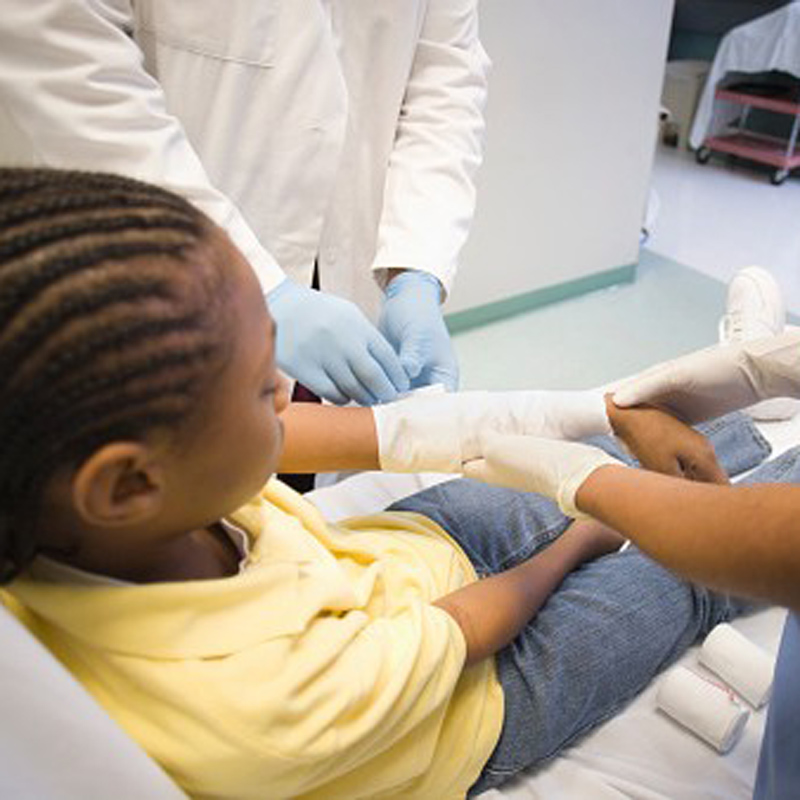Children are not little adults.
Children’s growing bodies are different from adult bodies and that includes their bones. Infants start with a skeleton made largely of cartilage that slowly matures into bone during development. As children grow their bones have a softer structure, which causes their bones to fracture in different ways than adult bones.
Even with similar injuries, adult’s and children’s bodies often have a different response and require special surgical techniques. Pediatric orthopedic surgeons specifically train to evaluate and treat children with bone conditions or fractures.
Growth Plate Injuries and Fractures
When thinking of growing bones, one may think the bone grows out from the center. However, growth plates consist of developing cartilage tissue near the ends of long bones. These areas produce new bone tissue and determine the final length and shape of bones in adulthood.
When a child’s bones have finished growing (or reached skeletal maturity), the growth plates harden and form one complete bone. Girls tend to reach skeletal maturity earlier than boys; their growth plates close around the age of 13 to 15, while boys’ growth plates close, around 15 to 17 years old. However, different growth plates will close at different times. The growth plates for the clavicle will not close until age 21 in most children.
Before growth is complete, the growth plates are susceptible to fractures. Fifteen to 30 percent of fractures are growth plate fractures. Because of their softer nature, growth plates tend to injure easier than the adjacent hard bone or tougher soft tissue. An injury that may cause a joint sprain in an adult may result in a growth plate fracture in a child.
Growth plate fractures need immediate treatment because they can affect how the bone grows. An injured growth plate not treated properly can lead to crooked or misshapen bones, limbs that are too short or even arthritis in the long term.
This greatly changes the way doctors treat and care for injuries. Emergency room physicians and other non-pediatric orthopedists often send children with growth plate injuries to a pediatric orthopedic surgeon for this type of injury.
While growth plate fractures are of particular concern. Even fractures in children that do not involve the growth plates can require special consideration.
Children’s bones tend to heal quicker than adults. This means that children need evaluation by a pediatric orthopedic surgeon promptly to ensure that the best possible treatment starts immediately. Proper, fast treatment of a growth plate injury improves the chances of healing without any growth problems or need for correction surgery if it heals improperly.
Importance of Pediatric Orthopedic Specialists
Pediatric orthopedic surgeons complete additional training where they learn a much more detailed and specific level of care in kid’s bone and joint disorders.
Pediatric orthopedic surgeons are:
- Trained in the treatment of pediatric injuries
- Specialize in children’s bones and growth
- Provide pediatric specific therapies
- Utilize pediatric specific surgical techniques and medical devices
Besides growth plate injuries, pediatric orthopedic surgeons often evaluate and treat children with special needs, deformities, and developmental delays. Complete pediatric fracture care is just part of the total orthopedic care that we provide to children every day.


